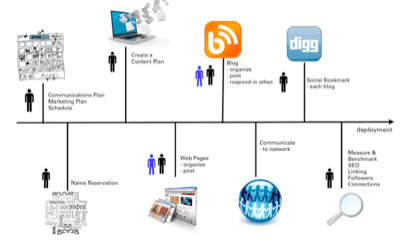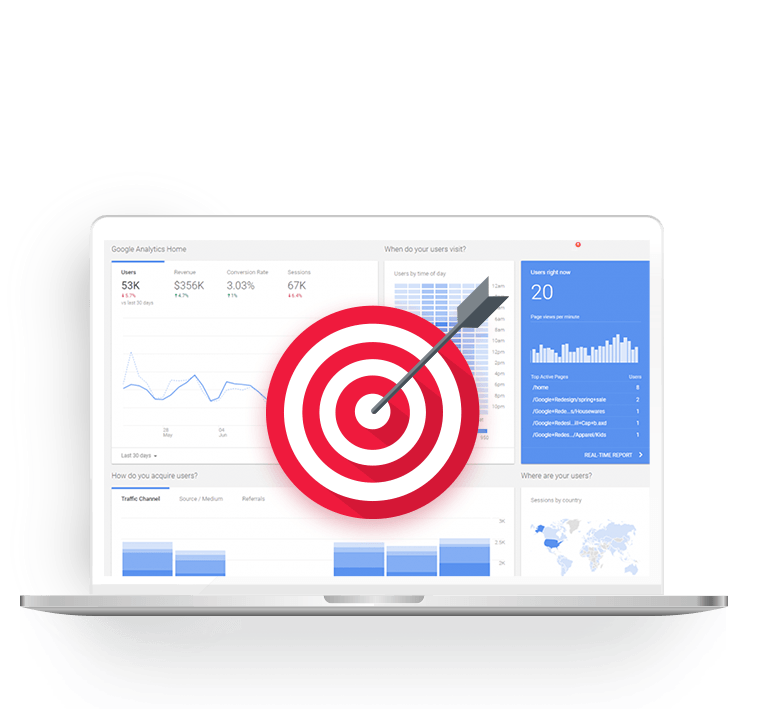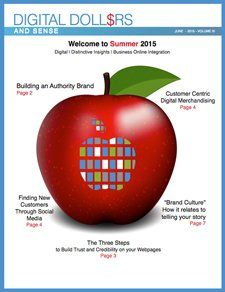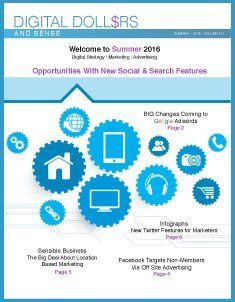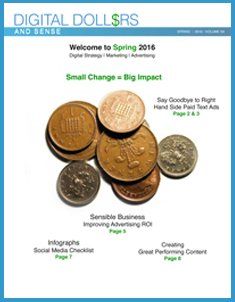Creating a Successful online Strategy
- By Joe Wozny
- •
- 29 Aug, 2016
As Featured In
Five-Step digitalroadmap Process
Martin Zwilling recently noted in a Forbes review of The Digital Dollar that “The route to success is not a random walk.” (Forbes, 2012). He further notes that “From a strategic perspective, all the above should start with an overall digital roadmap, where you define your goals, outline the steps required, and articulate your success measurements.”
Click here to read Martin's review.
This article outlines one proven method of creating an online strategy through the digitalroadmap process found in The Digital Dollar: Sustainable Strategies for Online Strategies. The key components of roadmap building are reviewed together with Insights, Tips and Advice including the “Must Haves” to to review or get started on your process.
“Must Have” Prerequisites
Successful online strategies are created when you have the following in place:
• An articulated vision, business plan or list of business goals you wish to accomplish. Online programs are enablers for organizational goals, they are not business drivers, so. Without clear stated business goals and objectives, a digitalroadmap has nothing to enable.
• The ability and culture to factually audit your existing online programs, and their performance where necessary. You may find yourself asking questions like, “Is what we are doing now working?” or “How are we measuring it?” or “How is this information we are collecting meaningful”, etc.
• In general terms, a practical and clear idea of the human and budget resources available to allocate to any plans made, so the planning process can make realistic recommendations.
• Not absolutely necessary, but highly recommended, is access to a trusted,, neutral source of information to help answer any questions that may arise around the online products and services you are considering. Knowledge resource(s) are important to the success of any venture.
Building a digitalroadmap
Following a defined process assists you in synthesizing the best ideas into a customized strategy suitable for your situation, business and objectives.
Step 1 – Frame the Objectives and Deliverables
In this step, define the specific goals, deliverables, project sponsors and team members your business wants to get from its online activities. This can be done in a one-page document often referred to as a “project scope”.
Step 2 – Assess Your Current Environment
Current situation analysis and summary – In this step, note and assess your current online channels and how these are performing in relation to your goals, costs, and time taken to maintain them. It’s often helpful to use analytics tools to understand how your organization is found online and who your customers are, as well as their current comments about your products and services.
It is also important to understand how much social or community equity you have during the assessment step. Questions to ask include - Who are your advocates? Who is in your immediate community? Who comprises your indirect community? What is their opinion on your brand, products and services? How do they react to items you request from them? Who are the influencers? Who are the followers? etc.
Step 3 – Option Mapping
It’s time to look at your online product and service (channel) options, once you have defined your goals and how you are doing now in relation to your goals. One of the challenges we all face in the online world are the number of channel options to choose from. The channel options you review and eventually choose should be determined by how they can assist in furthering your business goals - for example Facebook is a great channel to connect and engage with consumers where as LinkedIn is a great channel to connect and engage with business contacts.
Each channel will consume a portion of your budget and available resources. You will need the ability to deliver meaningful content to your audience through the channel. So review your options and assessments from this perspective as well.
Step 4 – Collaborative Review
Now that you have developed the basic outline of a strategy, review this strategy within your organization, with all your stakeholders. These discussions form the basis of recommendations and uncover any items not yet fully explored. Include discussions on how services from strategy decisions will be deployed and operated. Examine worst case scenarios to test how you would overcome adversity in your plan.
Step 5 – Recommendations and Communications
Your strategy needs to be documented and reviewed with all parties who will help you implement and
maintain it. The detail within your documentation depends on the culture of your organization. Effective plans should include a one-page visual document outlining what actions you plan to take over time, key speaking points, and resource requirements - see Figure 1. Always include a budget with estimated one-time and ongoing costs and of course state your assumptions about your strategy plan so you can refer to these as your get measurable results, plus new information about your activities and the activities of your competition.
Figure 1 - Example of a One Page digitalroadmap Visual Summary that was used by a financial organization.
Insights, Advice and Tips
Proven experience shows you should:
• Include your team when creating your roadmap. This helps build consensus and galvanize your online plans.
• Carry out regular Roadmap checks; online changes and your roadmap will require adjustments along the way
• Document your starting point in order to create a baseline to measure your accomplishments from.
• Celebrate when you get to each destination (roadmap goals or milestones).
• Post a one-page summary of your roadmap in a location where it can act as a reminder of your goals and activities.
Final Word - for now - Don’t stop what you are doing online today. Modify and adjust and use the roadmap process as a way of assessing your current activities and, if possible, building on your strengths.
Joe Wozny,
author of The Digital Dollar: Sustainable Strategies for Online Success, is a digital and online media thought leader, strategist, author, blogger and international presenter on strategies to improve the reach and success of Internet, social and digital media initiatives. Through Concentric, he helps leaders leverage their businesses using smart, well planned digital strategies. For more information on Joe as an author, please visit joewozny.com, and follow him on Facebook
and Twitter

